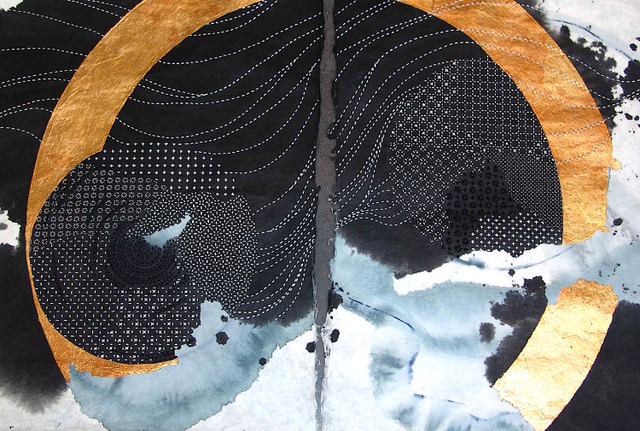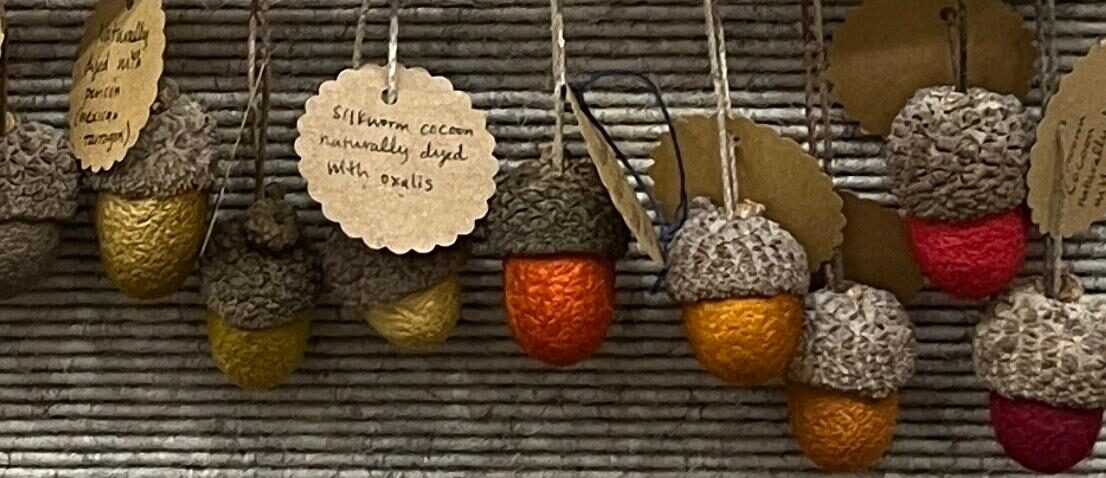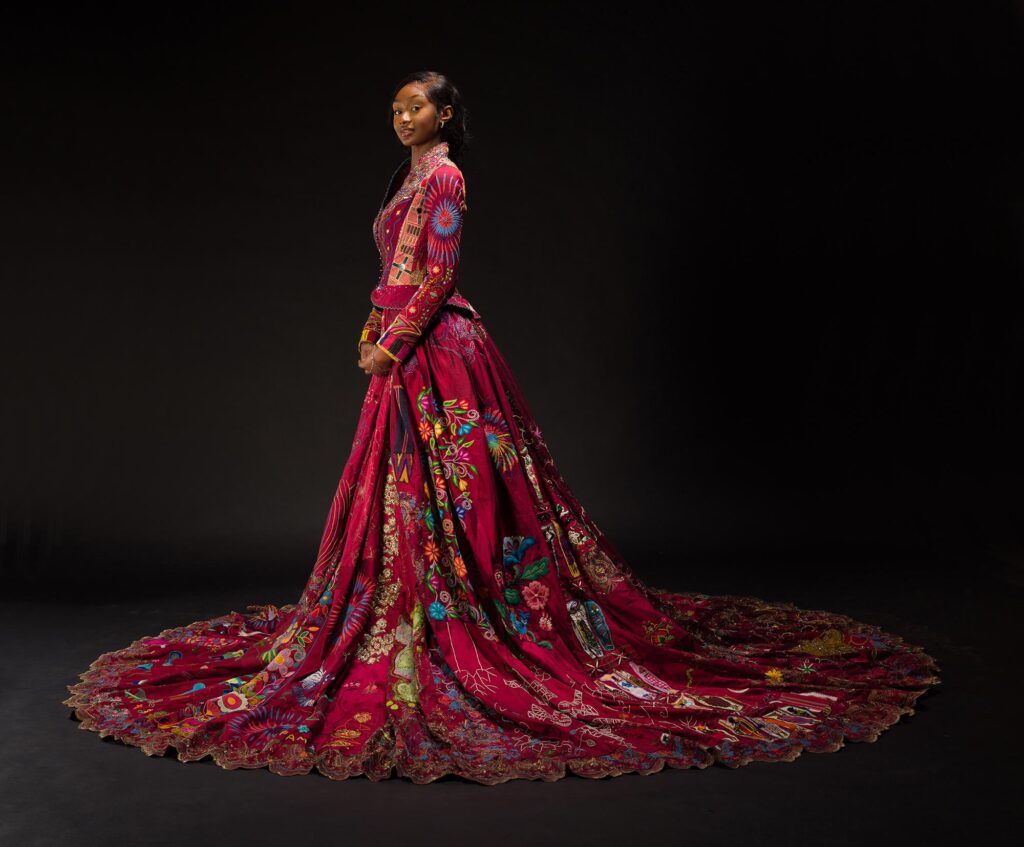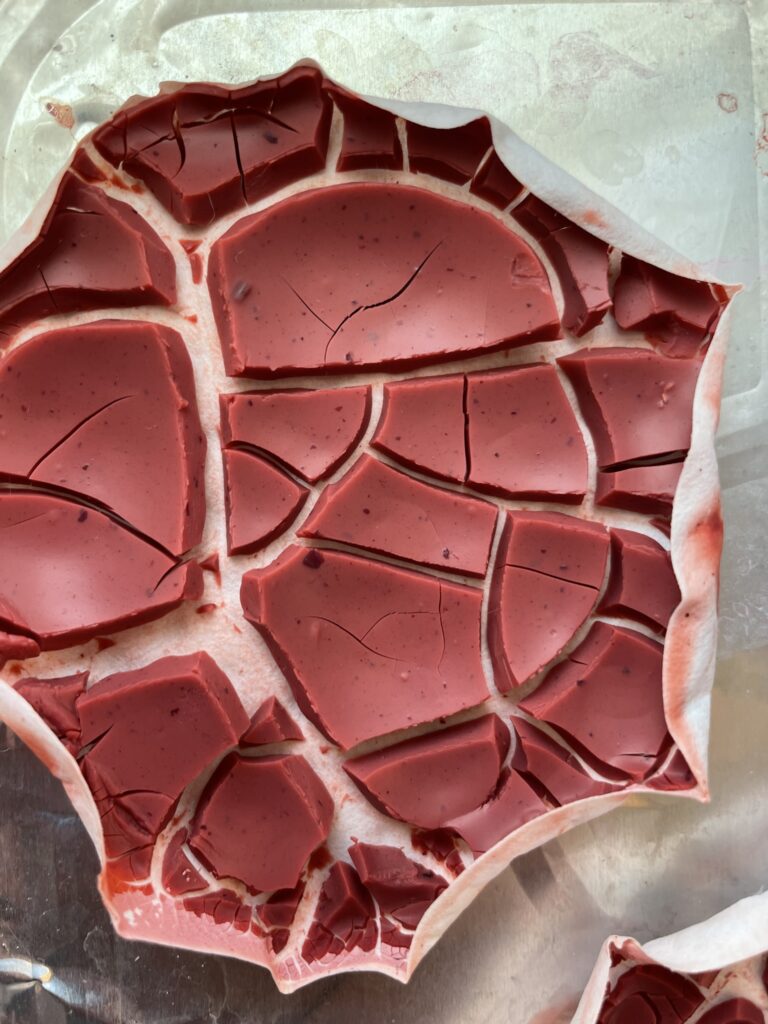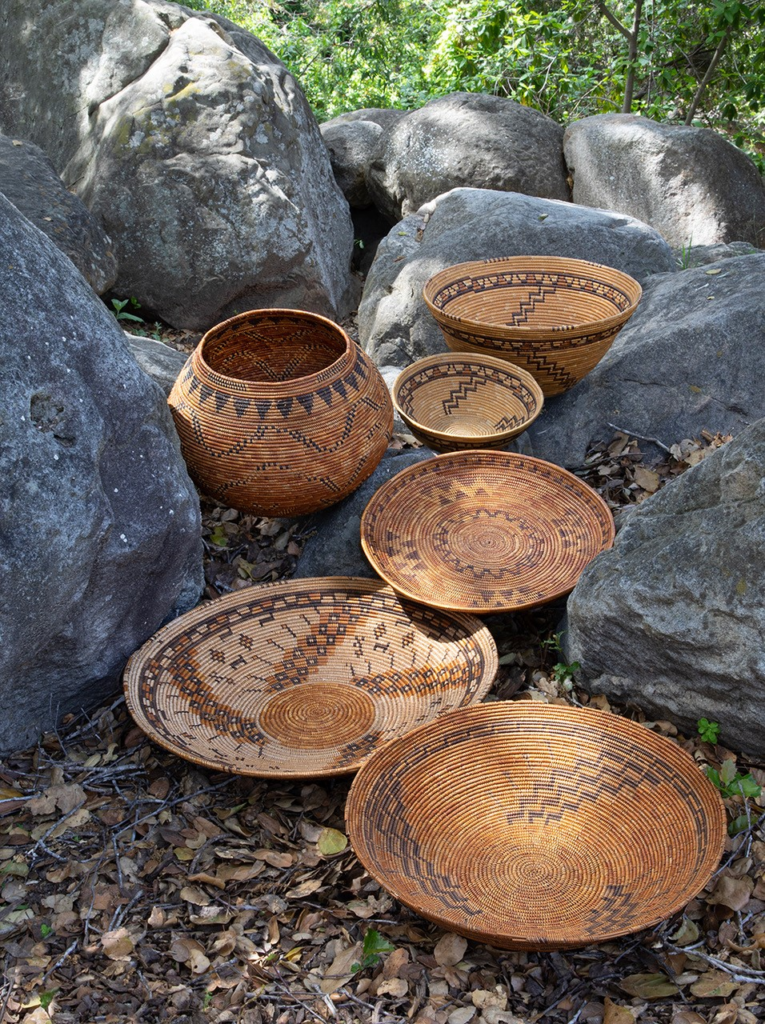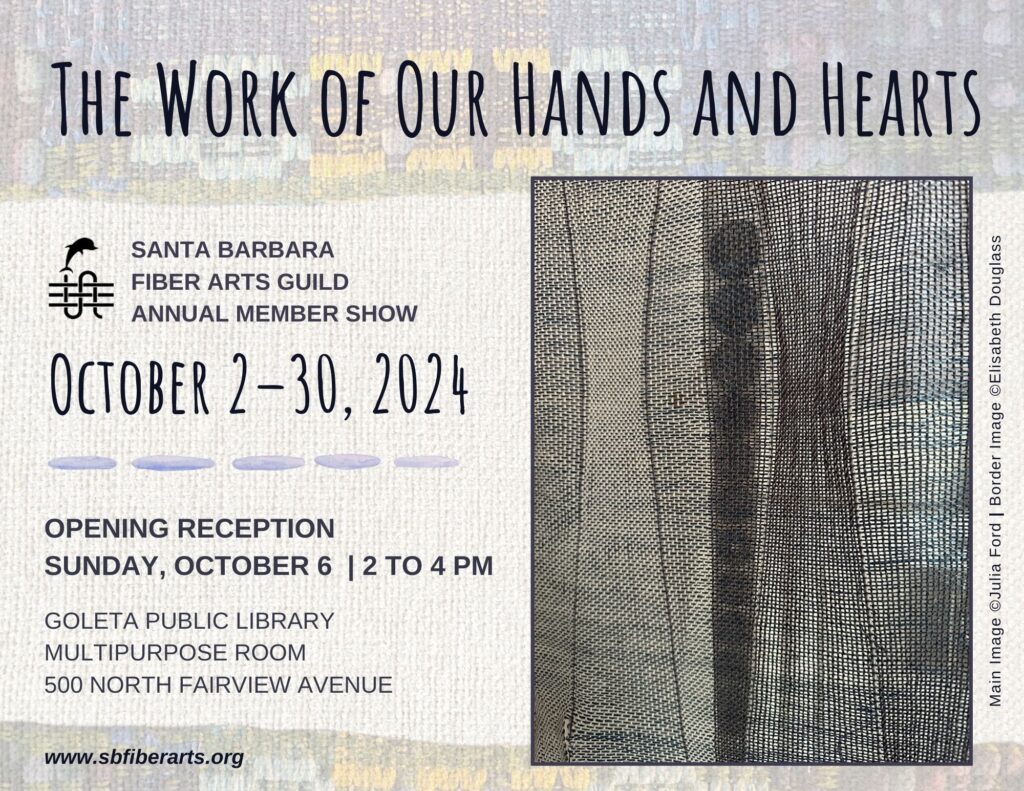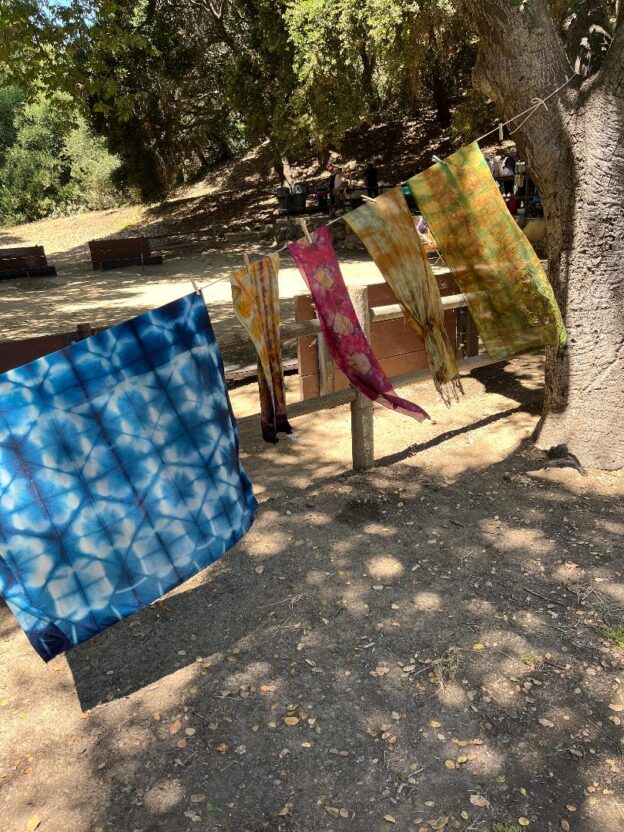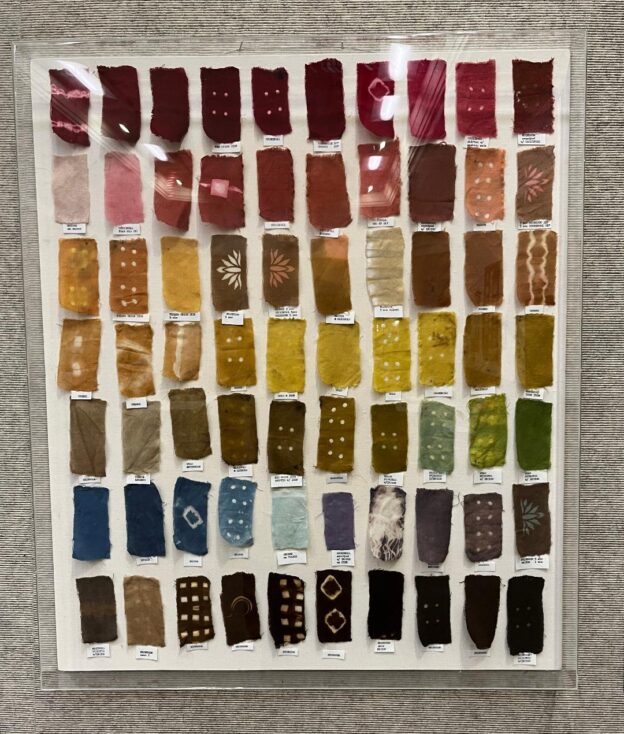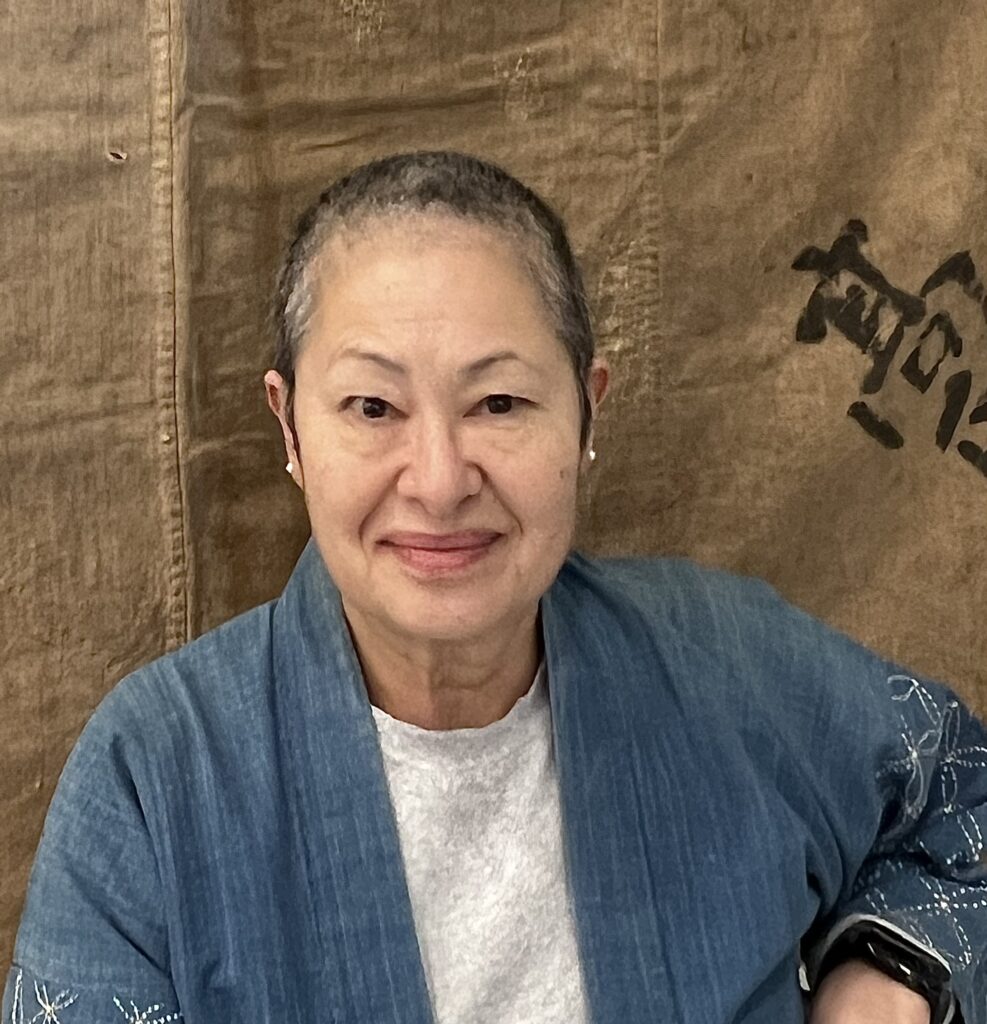
The sashiko workshop Lucy Arai is conducting will reframe this popular Japanese stitching within its cultural, functional, and historical contexts that date back to 10,000 years ago in Japan and was practiced by commoners into the 20th century. The patterned stitching that is known as sashiko emerged 425 years ago during the final feudal era of Japan during the Edo Period (1600-1868) when high taxes impoverished families and laws imposed invasive restrictions on all aspects of life, including the fibers, colors, and styles each class of society were permitted to wear; violators were punished by death.
Stitching strengthens, reinforces and quilts material for durability, warmth, and protection. In Japan, indigenous plant material was the sole resource for making clothing and was extremely labor-intensive work make the cloth, dye it in indigo for the antibacterial and insect repellent properties, and stitch garments and utilitarian textiles that had to be done year-round. Japanese placed the highest value on cloth because it was essential for survival, consequently, it was imperative to retain and preserve the structural integrity of cloth.
In this workshop, we will learn that sashiko, the little stabs of a threaded needle, is a structural stitching tradition of Japan and apply it to Japanese indigo-dyed cotton cloth and Japanese handmade papers. The only skill needed is the ability to hold a threaded sewing needle and passing it through a piece of cloth. You will feel the how sashiko effectively reinforces, strengthens, and quilts cloth, and you will see how the patterns emerged in the stitching practice over the centuries and generations of stitching to extend the life and retain the integrity of cloth for survival.
Lucy Arai continues to practice the sashiko running-stitch tradition of Japan as it was transmitted to her from her uncle in Tokyo more than 54 years ago. She has formal studio training in western art and sculptural ceramics, earning a Bachelor of Fine Arts degree from the University of South Carolina, and Master of Fine Arts degree and Certificate of Graduate Studies from the University of Michigan. Each of these three skill-sets have enabled Arai to learn through her hands, to create a new medium by applying the lessons she learned, and to be able to document, contextualize, and explain the process of development with the intent to educate and share. Her work is part of the U.S. Department of State Arts in Embassies Program and exhibited nationally and internationally.
Items participants need to bring for the workshop:
- 12” ruler, preferably clear with measurement lines
- small scissors
- white dressmaking pencil
- graphite pencil
Member pricing is $90, non-member pricing is $110 (both prices include a $20 materials kit!). This price includes either the Saturday sessions, or the Sunday sessions — each with the option to add an extra Sunday afternoon session for $30. Additional sign-up details coming soon!
